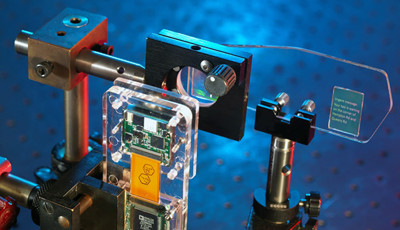Novel Wearable Optical Display
on

Trulife Optics together with the National Physics Laboratory has demonstrated a new type of transparent head-up display device. According to Simon Hall, lead scientist of Adaptive Optics at the NPL the new technology is unlike existing solutions: “Google’s solution is effectively a prism; it’s like a half-silvered mirror that you’re looking into and the Epson Moverio uses an embedded, slightly different refractive index component in a very thick lens which is reflecting light travelling through the rather thick waveguide".
This new component is set to transform the development of wearable augmented reality and head-up display devices. Jonathan Lewis, CEO at Trulife optics commented that, “The development of wearable augmented reality devices has been curtailed by the lack of an optical component that allows for the overlay of high-definition, full colour images. But with the launch of our optic, we are providing that missing piece in the augmented reality jigsaw.”
Light carrying the image information is transmitted into the first hologram and then turned through 90 degrees through the length of the optical waveguide using total internal reflection before hitting the second hologram. Here it is turned a further 90 degrees then projected into the human eye. This allows for overlaid transparent images to be projected from the centre of the optic in perfect focus. The image is transparent, enabling the overlay of information on whatever subject is being viewed. The optic itself is lightweight, less than 2mm thick, and can be easily mass-produced for consumer and industrial applications.
The device is available now and costs £300 (plus VAT) per unit for developers creating prototype devices. The cost of the optic for devices to be made in commercial volumes will depend on the final application and device to be produced.
Source: Trulife optics


Discussion (0 comments)